 |
| Claude Lévy-Strauss defines mythical
thinking as "intellectual bricolage," noting its function as a link
between artistic creation and scientific knowledge. Since his time,
interactions between artists and scientists have gained increasing
significance as rediscovered forms of cultural encounter and
knowledge transfer. Such interactions create a framework for
reflecting on the fast-paced developments in new media and
technologies. Modern society exists in a world it must "acquire."
The means people use to "acquire" the world are largely due to the
efforts of science. A world without science, research and the
resulting developments is unthinkable. Despite this, the
relationship between science and society is not simple, because
scientific developments often lead to problems which cannot be
solved by scientific means. The opportunities provided by art and
culture in this regard are seldom realized. |
 |
 |
 |
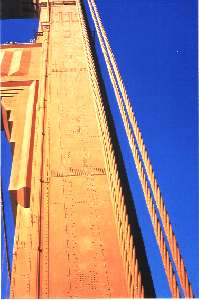 Against this backdrop, the Munich Department of
Culture has used a project of Munich artist Nele Stroebel to
introduce a key concept of our culture in all its artistic,
scientific, and social contexts: r e p a i r. This concept has been
reinfused with value through the impact of the new media and
technologies, changes in the relationship between man and machine,
and finally, through the events of the past century. Repair is a
cultural act of restoring items, bodies and souls, nature and
culture. Given the constant and increasing vulnerability of our
bodies, our cultural, economic, and military symbols, and the
stepwise destruction of nature, repair has become an inevitable
component of human life. Repair is also a creative process which
highlights aesthetic differences while transforming the "old" into
the "new."
Against this backdrop, the Munich Department of
Culture has used a project of Munich artist Nele Stroebel to
introduce a key concept of our culture in all its artistic,
scientific, and social contexts: r e p a i r. This concept has been
reinfused with value through the impact of the new media and
technologies, changes in the relationship between man and machine,
and finally, through the events of the past century. Repair is a
cultural act of restoring items, bodies and souls, nature and
culture. Given the constant and increasing vulnerability of our
bodies, our cultural, economic, and military symbols, and the
stepwise destruction of nature, repair has become an inevitable
component of human life. Repair is also a creative process which
highlights aesthetic differences while transforming the "old" into
the "new." |
|
 |
 |
 Not everything can be repaired, however.
There are limits to repair. Some things are reparable, some
irreparable. This book seeks to show the reader a wide range of
repairs which unites many different reflections and sketches in an
interdisciplinary approach to repairing the world. In his
philosophical introduction, Bernhard Waldenfels expands on the
connection between things, bodies, and repair, in relationship to
chronological and economic factors as well as in the comparison of
old and new. Heidrun Friese points to the impossibility of
recapturing an original context, and thus to the hopelessness of
reconstructing something during the repair process. Ulrike
Leuschner views the text-critical edition of a manuscript as repair
in the context of literature, a process which reflects the constant
changes in the cultural memory. She calls the so-called "spelling
reform" in Germany a very strange type of repair, and considers
"repairs" of older works to conform to the new spelling rules to be
worthless. Hartfrid Neunzert and Marlene Lauter highlight repairs
in museums. While Neunzert supports repair that preserves an
object's actual state, documenting any changes and thus
counteracting falsification of its history, Lauter compares the
difficulties in procuring art with those of craftsmanlike
repairs. Not everything can be repaired, however.
There are limits to repair. Some things are reparable, some
irreparable. This book seeks to show the reader a wide range of
repairs which unites many different reflections and sketches in an
interdisciplinary approach to repairing the world. In his
philosophical introduction, Bernhard Waldenfels expands on the
connection between things, bodies, and repair, in relationship to
chronological and economic factors as well as in the comparison of
old and new. Heidrun Friese points to the impossibility of
recapturing an original context, and thus to the hopelessness of
reconstructing something during the repair process. Ulrike
Leuschner views the text-critical edition of a manuscript as repair
in the context of literature, a process which reflects the constant
changes in the cultural memory. She calls the so-called "spelling
reform" in Germany a very strange type of repair, and considers
"repairs" of older works to conform to the new spelling rules to be
worthless. Hartfrid Neunzert and Marlene Lauter highlight repairs
in museums. While Neunzert supports repair that preserves an
object's actual state, documenting any changes and thus
counteracting falsification of its history, Lauter compares the
difficulties in procuring art with those of craftsmanlike
repairs. |
|
 |
 |
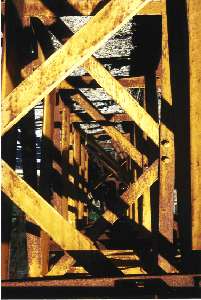 A report from the practice of architect
Ingrid Krau documents repairs to anything as the result of varying
theoretical analyses. This leads her to raise questions about the
quality of expert opinions. Using the restoration of the Munich
Pinakothek as an example, Friedrich Kurrent shows the productive
union of old and new. "Especially the message found in a dense
building material with new parts is that which jumps out at us from
the building's physiognomy; it speaks of the building's history; it
doesn't conceal its destruction; it tells its entire history." This
way of handling history shows the value of memory and oblivion in
man's cultural as well as psychological processes. In a
retrospective on Alexandria, the city of his birth, Alfred Ridgeley
writes that he was only able to heal the wounds of emigration after
returning to his native Egypt. Tortured memories of his homeland
only lost their traumatic effect after Ridgeley was finally able to
confront reality. A report from the practice of architect
Ingrid Krau documents repairs to anything as the result of varying
theoretical analyses. This leads her to raise questions about the
quality of expert opinions. Using the restoration of the Munich
Pinakothek as an example, Friedrich Kurrent shows the productive
union of old and new. "Especially the message found in a dense
building material with new parts is that which jumps out at us from
the building's physiognomy; it speaks of the building's history; it
doesn't conceal its destruction; it tells its entire history." This
way of handling history shows the value of memory and oblivion in
man's cultural as well as psychological processes. In a
retrospective on Alexandria, the city of his birth, Alfred Ridgeley
writes that he was only able to heal the wounds of emigration after
returning to his native Egypt. Tortured memories of his homeland
only lost their traumatic effect after Ridgeley was finally able to
confront reality. |
|
 |
 |
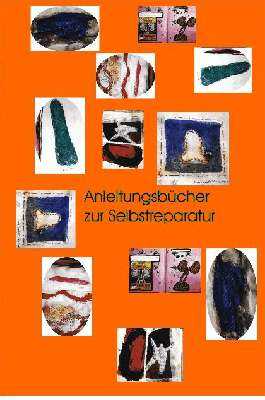 Peider A. Defilla and Hildegard Kronawitter write
on the chances and risks of political repairs while Anneliese Durst
discusses the need for repairs in regard to unemployment. More than
ever, we need community projects which ensure the future of work in
our society, and thus, humane forms of life. The texts of this book
show that repairs are an inherent component of our cultural spaces.
They are necessary in every area, but can develop negative
momentum, as Lydia Andrea Harl shows by comparing how we deal with
the world and how we deal with the human body - both fields of
experimentation for approaching the limits of the possible.
Finally, Paul Parin exposes the strange helplessness of surgically
repairing wounds resulting from war. "How absurd it is to spend
time patching up mutilated victims of violence in a makeshift and
incomplete manner when one knows that power struggles and the
seemingly insatiable processes of industrial production constantly
create new victims, that murders occur every day, and new wounds as
well."
Peider A. Defilla and Hildegard Kronawitter write
on the chances and risks of political repairs while Anneliese Durst
discusses the need for repairs in regard to unemployment. More than
ever, we need community projects which ensure the future of work in
our society, and thus, humane forms of life. The texts of this book
show that repairs are an inherent component of our cultural spaces.
They are necessary in every area, but can develop negative
momentum, as Lydia Andrea Harl shows by comparing how we deal with
the world and how we deal with the human body - both fields of
experimentation for approaching the limits of the possible.
Finally, Paul Parin exposes the strange helplessness of surgically
repairing wounds resulting from war. "How absurd it is to spend
time patching up mutilated victims of violence in a makeshift and
incomplete manner when one knows that power struggles and the
seemingly insatiable processes of industrial production constantly
create new victims, that murders occur every day, and new wounds as
well." |
|
 |
 |
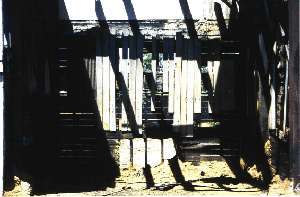 At the end of this book, one thing is clear: the term
"repair" has many meanings and connotations which are themselves
constantly changing. Concluding with the words of Schultes and
Schoeffel, "The concepts of being w o r t h repairing and of n e e
d i n g repair show the particularly human relativity of the idea
of repair. In the final analysis, both of these concepts - being
worth repairing as well as needing repair - are inherently
subjective." At the end of this book, one thing is clear: the term
"repair" has many meanings and connotations which are themselves
constantly changing. Concluding with the words of Schultes and
Schoeffel, "The concepts of being w o r t h repairing and of n e e
d i n g repair show the particularly human relativity of the idea
of repair. In the final analysis, both of these concepts - being
worth repairing as well as needing repair - are inherently
subjective." |
|
|
 |
 |
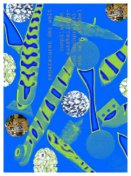
 Against this backdrop, the Munich Department of
Culture has used a project of Munich artist Nele Stroebel to
introduce a key concept of our culture in all its artistic,
scientific, and social contexts: r e p a i r. This concept has been
reinfused with value through the impact of the new media and
technologies, changes in the relationship between man and machine,
and finally, through the events of the past century. Repair is a
cultural act of restoring items, bodies and souls, nature and
culture. Given the constant and increasing vulnerability of our
bodies, our cultural, economic, and military symbols, and the
stepwise destruction of nature, repair has become an inevitable
component of human life. Repair is also a creative process which
highlights aesthetic differences while transforming the "old" into
the "new."
Against this backdrop, the Munich Department of
Culture has used a project of Munich artist Nele Stroebel to
introduce a key concept of our culture in all its artistic,
scientific, and social contexts: r e p a i r. This concept has been
reinfused with value through the impact of the new media and
technologies, changes in the relationship between man and machine,
and finally, through the events of the past century. Repair is a
cultural act of restoring items, bodies and souls, nature and
culture. Given the constant and increasing vulnerability of our
bodies, our cultural, economic, and military symbols, and the
stepwise destruction of nature, repair has become an inevitable
component of human life. Repair is also a creative process which
highlights aesthetic differences while transforming the "old" into
the "new." Not everything can be repaired, however.
There are limits to repair. Some things are reparable, some
irreparable. This book seeks to show the reader a wide range of
repairs which unites many different reflections and sketches in an
interdisciplinary approach to repairing the world. In his
philosophical introduction, Bernhard Waldenfels expands on the
connection between things, bodies, and repair, in relationship to
chronological and economic factors as well as in the comparison of
old and new. Heidrun Friese points to the impossibility of
recapturing an original context, and thus to the hopelessness of
reconstructing something during the repair process. Ulrike
Leuschner views the text-critical edition of a manuscript as repair
in the context of literature, a process which reflects the constant
changes in the cultural memory. She calls the so-called "spelling
reform" in Germany a very strange type of repair, and considers
"repairs" of older works to conform to the new spelling rules to be
worthless. Hartfrid Neunzert and Marlene Lauter highlight repairs
in museums. While Neunzert supports repair that preserves an
object's actual state, documenting any changes and thus
counteracting falsification of its history, Lauter compares the
difficulties in procuring art with those of craftsmanlike
repairs.
Not everything can be repaired, however.
There are limits to repair. Some things are reparable, some
irreparable. This book seeks to show the reader a wide range of
repairs which unites many different reflections and sketches in an
interdisciplinary approach to repairing the world. In his
philosophical introduction, Bernhard Waldenfels expands on the
connection between things, bodies, and repair, in relationship to
chronological and economic factors as well as in the comparison of
old and new. Heidrun Friese points to the impossibility of
recapturing an original context, and thus to the hopelessness of
reconstructing something during the repair process. Ulrike
Leuschner views the text-critical edition of a manuscript as repair
in the context of literature, a process which reflects the constant
changes in the cultural memory. She calls the so-called "spelling
reform" in Germany a very strange type of repair, and considers
"repairs" of older works to conform to the new spelling rules to be
worthless. Hartfrid Neunzert and Marlene Lauter highlight repairs
in museums. While Neunzert supports repair that preserves an
object's actual state, documenting any changes and thus
counteracting falsification of its history, Lauter compares the
difficulties in procuring art with those of craftsmanlike
repairs. A report from the practice of architect
Ingrid Krau documents repairs to anything as the result of varying
theoretical analyses. This leads her to raise questions about the
quality of expert opinions. Using the restoration of the Munich
Pinakothek as an example, Friedrich Kurrent shows the productive
union of old and new. "Especially the message found in a dense
building material with new parts is that which jumps out at us from
the building's physiognomy; it speaks of the building's history; it
doesn't conceal its destruction; it tells its entire history." This
way of handling history shows the value of memory and oblivion in
man's cultural as well as psychological processes. In a
retrospective on Alexandria, the city of his birth, Alfred Ridgeley
writes that he was only able to heal the wounds of emigration after
returning to his native Egypt. Tortured memories of his homeland
only lost their traumatic effect after Ridgeley was finally able to
confront reality.
A report from the practice of architect
Ingrid Krau documents repairs to anything as the result of varying
theoretical analyses. This leads her to raise questions about the
quality of expert opinions. Using the restoration of the Munich
Pinakothek as an example, Friedrich Kurrent shows the productive
union of old and new. "Especially the message found in a dense
building material with new parts is that which jumps out at us from
the building's physiognomy; it speaks of the building's history; it
doesn't conceal its destruction; it tells its entire history." This
way of handling history shows the value of memory and oblivion in
man's cultural as well as psychological processes. In a
retrospective on Alexandria, the city of his birth, Alfred Ridgeley
writes that he was only able to heal the wounds of emigration after
returning to his native Egypt. Tortured memories of his homeland
only lost their traumatic effect after Ridgeley was finally able to
confront reality. Peider A. Defilla and Hildegard Kronawitter write
on the chances and risks of political repairs while Anneliese Durst
discusses the need for repairs in regard to unemployment. More than
ever, we need community projects which ensure the future of work in
our society, and thus, humane forms of life. The texts of this book
show that repairs are an inherent component of our cultural spaces.
They are necessary in every area, but can develop negative
momentum, as Lydia Andrea Harl shows by comparing how we deal with
the world and how we deal with the human body - both fields of
experimentation for approaching the limits of the possible.
Finally, Paul Parin exposes the strange helplessness of surgically
repairing wounds resulting from war. "How absurd it is to spend
time patching up mutilated victims of violence in a makeshift and
incomplete manner when one knows that power struggles and the
seemingly insatiable processes of industrial production constantly
create new victims, that murders occur every day, and new wounds as
well."
Peider A. Defilla and Hildegard Kronawitter write
on the chances and risks of political repairs while Anneliese Durst
discusses the need for repairs in regard to unemployment. More than
ever, we need community projects which ensure the future of work in
our society, and thus, humane forms of life. The texts of this book
show that repairs are an inherent component of our cultural spaces.
They are necessary in every area, but can develop negative
momentum, as Lydia Andrea Harl shows by comparing how we deal with
the world and how we deal with the human body - both fields of
experimentation for approaching the limits of the possible.
Finally, Paul Parin exposes the strange helplessness of surgically
repairing wounds resulting from war. "How absurd it is to spend
time patching up mutilated victims of violence in a makeshift and
incomplete manner when one knows that power struggles and the
seemingly insatiable processes of industrial production constantly
create new victims, that murders occur every day, and new wounds as
well." At the end of this book, one thing is clear: the term
"repair" has many meanings and connotations which are themselves
constantly changing. Concluding with the words of Schultes and
Schoeffel, "The concepts of being w o r t h repairing and of n e e
d i n g repair show the particularly human relativity of the idea
of repair. In the final analysis, both of these concepts - being
worth repairing as well as needing repair - are inherently
subjective."
At the end of this book, one thing is clear: the term
"repair" has many meanings and connotations which are themselves
constantly changing. Concluding with the words of Schultes and
Schoeffel, "The concepts of being w o r t h repairing and of n e e
d i n g repair show the particularly human relativity of the idea
of repair. In the final analysis, both of these concepts - being
worth repairing as well as needing repair - are inherently
subjective."